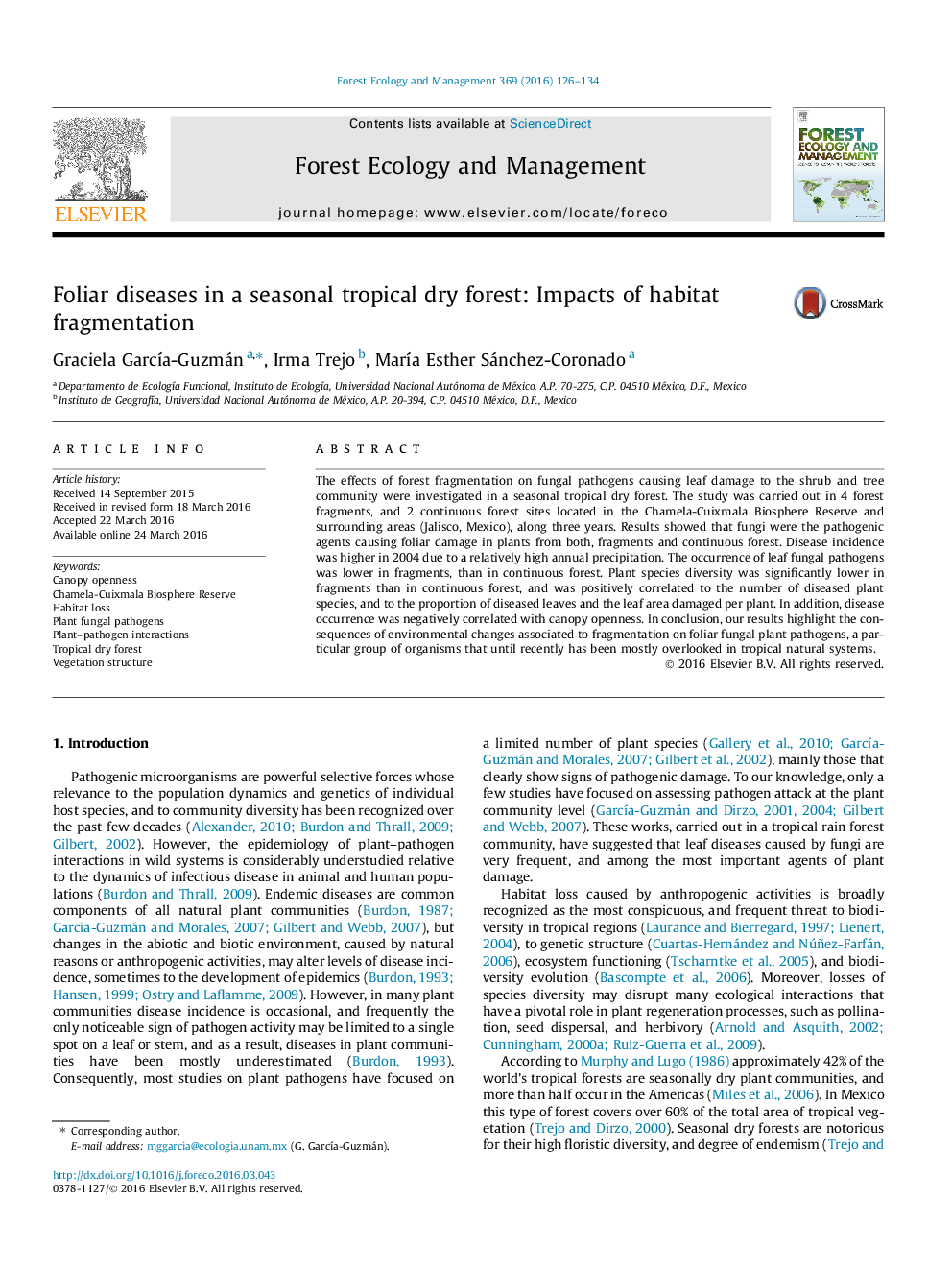| Article ID | Journal | Published Year | Pages | File Type |
|---|---|---|---|---|
| 85935 | Forest Ecology and Management | 2016 | 9 Pages |
•Fungal foliar diseases are common components in the seasonal tropical dry forest.•Fungal pathogens should be seen as an essential part of any ecosystem.•Increased canopy openness in forest fragments results in low disease incidence.•Fragmentation may cause extinction of pathogenic species still unknown to science.
The effects of forest fragmentation on fungal pathogens causing leaf damage to the shrub and tree community were investigated in a seasonal tropical dry forest. The study was carried out in 4 forest fragments, and 2 continuous forest sites located in the Chamela-Cuixmala Biosphere Reserve and surrounding areas (Jalisco, Mexico), along three years. Results showed that fungi were the pathogenic agents causing foliar damage in plants from both, fragments and continuous forest. Disease incidence was higher in 2004 due to a relatively high annual precipitation. The occurrence of leaf fungal pathogens was lower in fragments, than in continuous forest. Plant species diversity was significantly lower in fragments than in continuous forest, and was positively correlated to the number of diseased plant species, and to the proportion of diseased leaves and the leaf area damaged per plant. In addition, disease occurrence was negatively correlated with canopy openness. In conclusion, our results highlight the consequences of environmental changes associated to fragmentation on foliar fungal plant pathogens, a particular group of organisms that until recently has been mostly overlooked in tropical natural systems.
